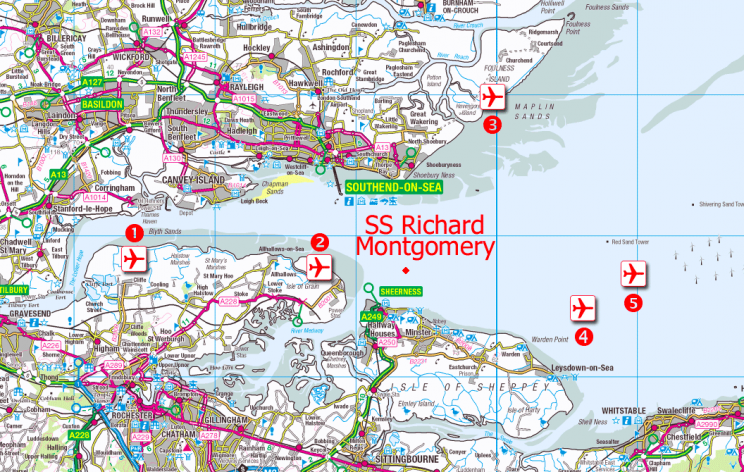Unexploded warship off Kent coast ‘could cause 16-foot-high tsunami’

A warship lying in the waters off the Kent coast is packed with so much explosives that it could cause a TSUNAMI if they were to go off.
The SS Richard Montgomery resides at the bottom of the Thames Estuary after it sunk off Sheerness while delivering thousands of tonnes of munitions to France.
Some of the bombs on board the World War Two shipwreck were later salvaged but more than 1,400 tonnes of live ammunition are still on board.


An explosion could cause a “mini tsunami” according to experts – that some claim could destroy the nearby port of Sheerness.
A BBC report in 1970 estimated the resulting tidal wave could be as high as 16ft, although news reports in 2012 said the wave would only reach 4ft in height.
However, even if the revised estimates were accurate, it would still be enough to sweep up the River Medway, flooding thousands of homes and ruining local towns and villages – including in Essex areas like Gravesend, Canvey Island and Southend.
MORE: 87 bombs found at British nudist beach
MORE: Unknown metal ingots on shipwreck offer hint that Atlantis might be real
The incredible story of the wreck – whose masts can still be seen sticking out of the water – is being turned into a documentary.
Narrated by Lovejoy star Ian McShane, ‘A Disaster Waiting To Happen’ claims the explosion would result in “the triggering of a catastrophic tsunami”.
Signs reading “Danger – Unexploded Ammunition. Do Not Approach or Board This Wreck”, surround the vessel.

The ship is monitored by the Maritime and Coastguard Agency and an exclusion zone around her is continuously monitored visually and by radar.
Despite the caution surrounding the ship, the Maritime and Coastguard Agency believe that the risk of a major explosion is remote after carrying out a risk assessment.
In 2004 the New Scientist reported that if the ship exploded it would be one of the biggest non-nuclear blasts ever.
Citing government documents released in 2004, the publication concluded that the cargo was still deadly, and could be detonated by a collision, an attack, or even shifting of the cargo in the tide.
Top pic: WIkipedia

 Yahoo News
Yahoo News 


